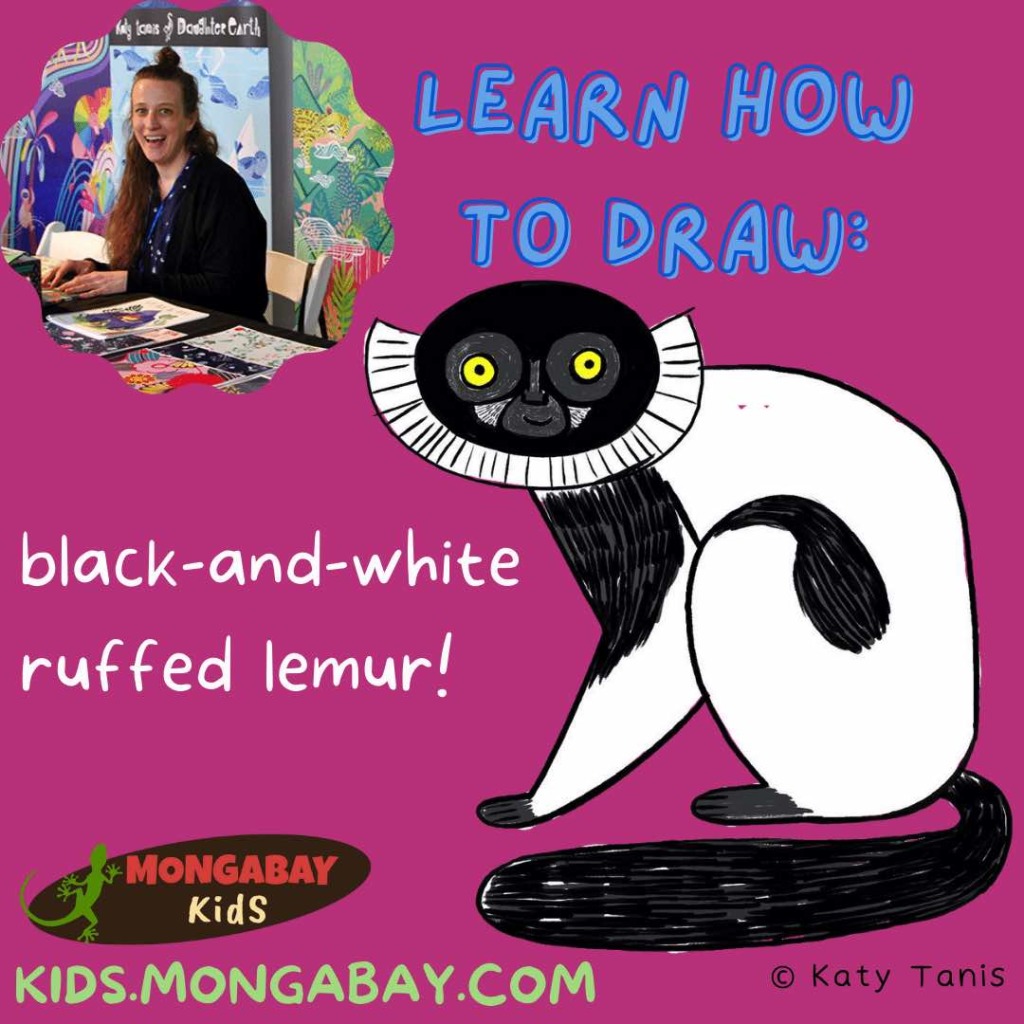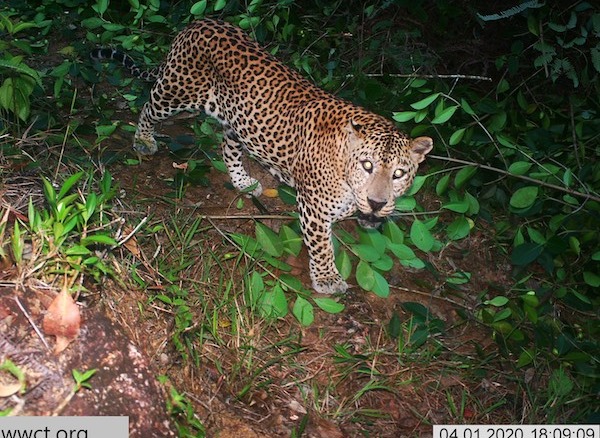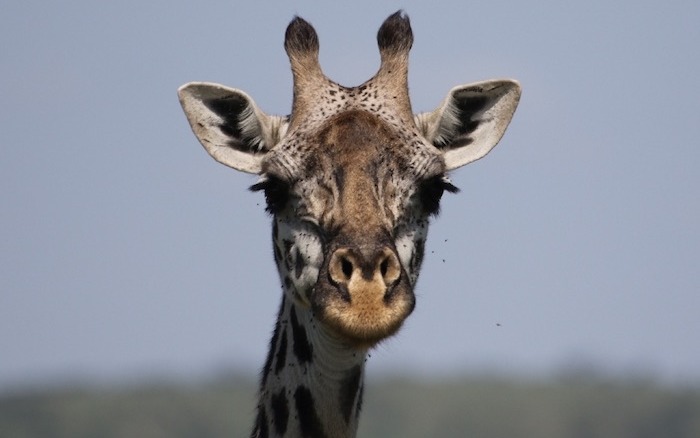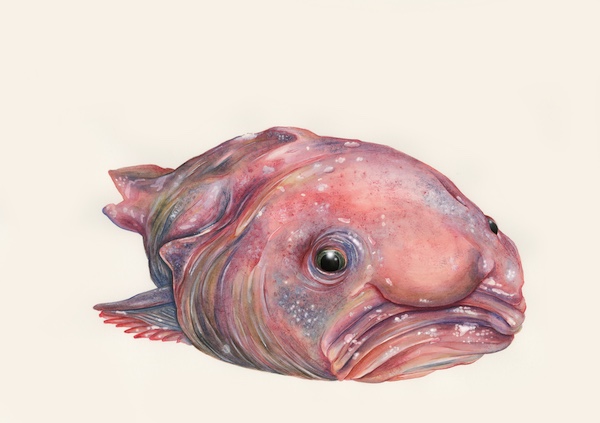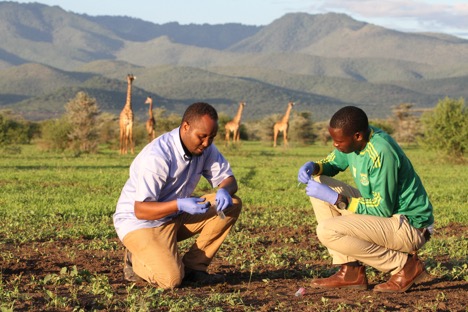Meet Katy Tanis:
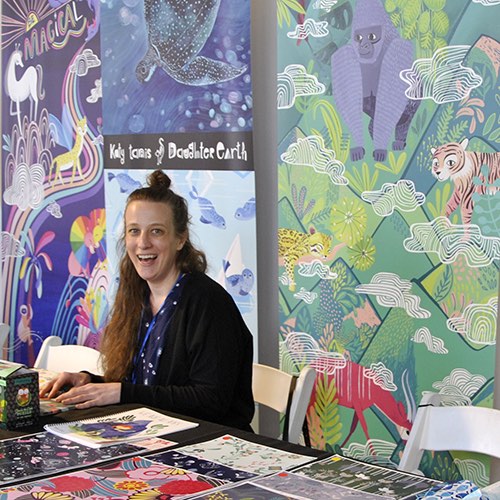
Katy is an artist and conservationist. Her illustrations and designs are inspired by wild nature! Katy’s art appears in books, on fabrics, and on puzzles, games, and more.
Katy designed this year’s World Lemur Day logo, which features a rufous mouse lemur and red-bellied lemur from Ranomafana National Park in Madagascar.
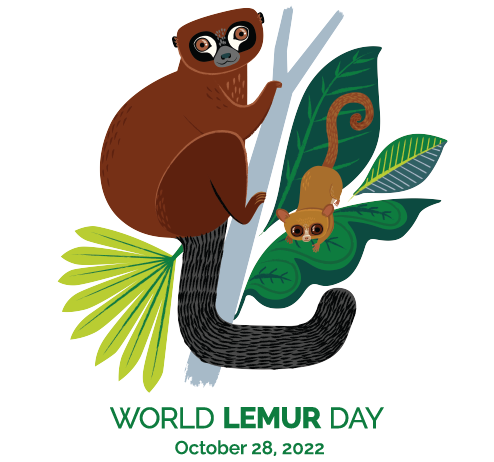
We talked to Katy all about lemurs and art!
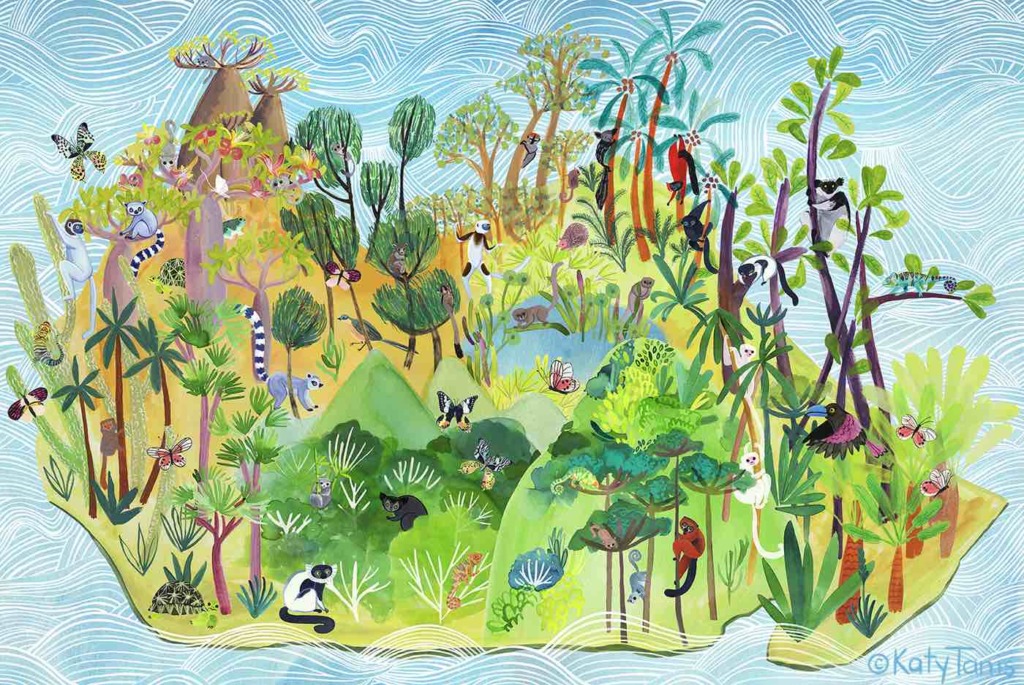
Mongabay Kids: You are helping celebrate World Lemur Day by drawing lemurs. How many different species of lemurs have you drawn? What lemurs are the most fun to draw?
Katy: Oh my! I have drawn so many lemurs. I had to make a list and I came up with 38. (The list is at the bottom of this post.) My style of art is more stylized than scientific, so sometimes I draw a generic mouse lemur, rather than a specific species of mouse lemur. Some species of lemurs I have drawn many times like: black-and-white ruffed lemurs, aye-ayes, and ring-tailed lemurs.
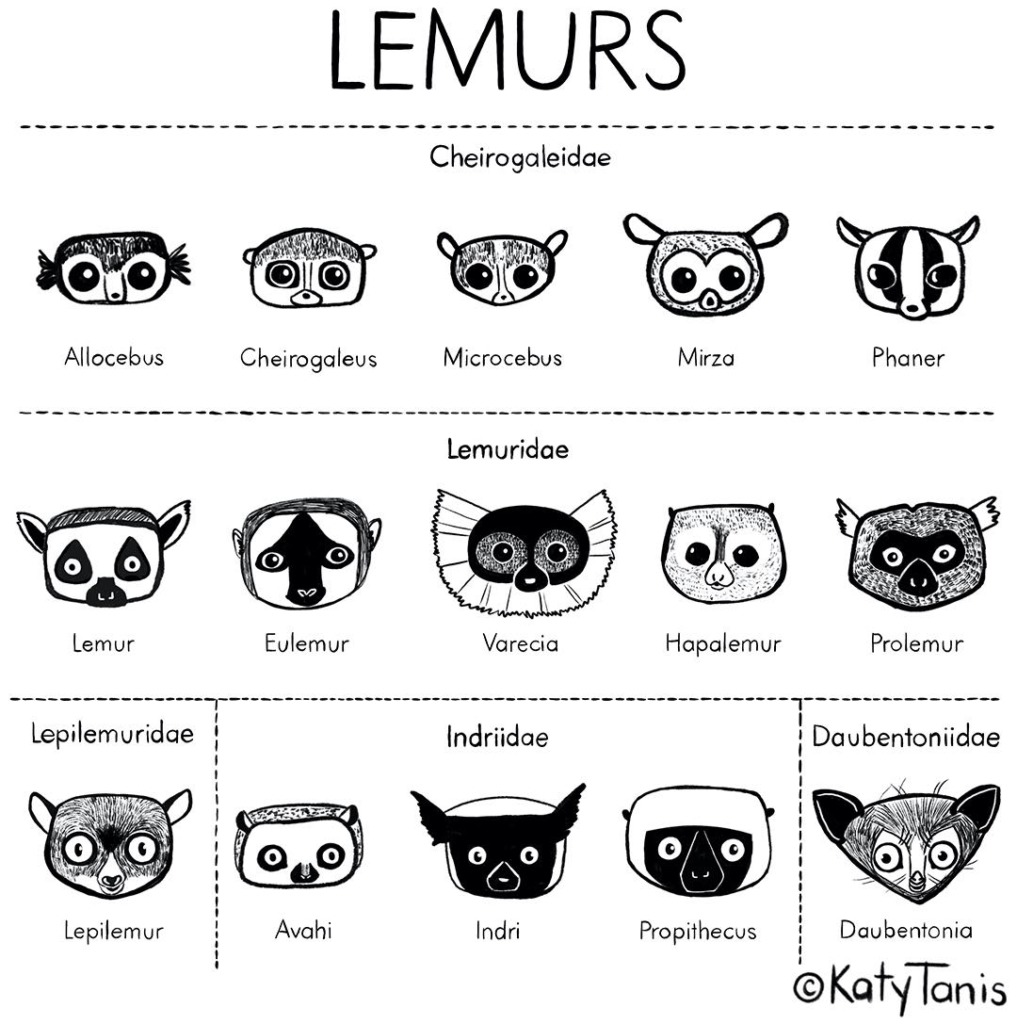
Mongabay Kids: How did you decide to become an artist as a career, and how did you make that happen?
Katy: Like most kids, I enjoyed drawing. I just never stopped. I was never the stand-out artist in art class, but I was creative and passionate. I was lucky to have family and art teachers who encouraged me to keep making art.
I also loved math and science so I had a hard time choosing a “career path” when it was time to apply to college. I picked a university that had both science programs and art programs, and got two degrees in Computer Science and Art.
I don’t think it is necessary to go to college to become an artist, but it is important to practice A LOT! College helped me have structure and focus to start that practice. It also gave me the opportunity to explore many different kinds of art.
Mongabay Kids: Many of your drawings are about animals. How would you like your drawings to help the conservation of animals like lemurs?
Katy: My goal is to get people to care about species and their conservation. I see it as the very first step in the conservation process. Often I try to use lesser-known species in hopes more people will learn about them, because people can’t care about species they don’t know about.
Since people don’t usually buy things with animals they don’t know about, I need to find new ways to make it interesting. I usually try to do this with fun colors, interesting compositions, or include lesser-known animals with more popular animals.
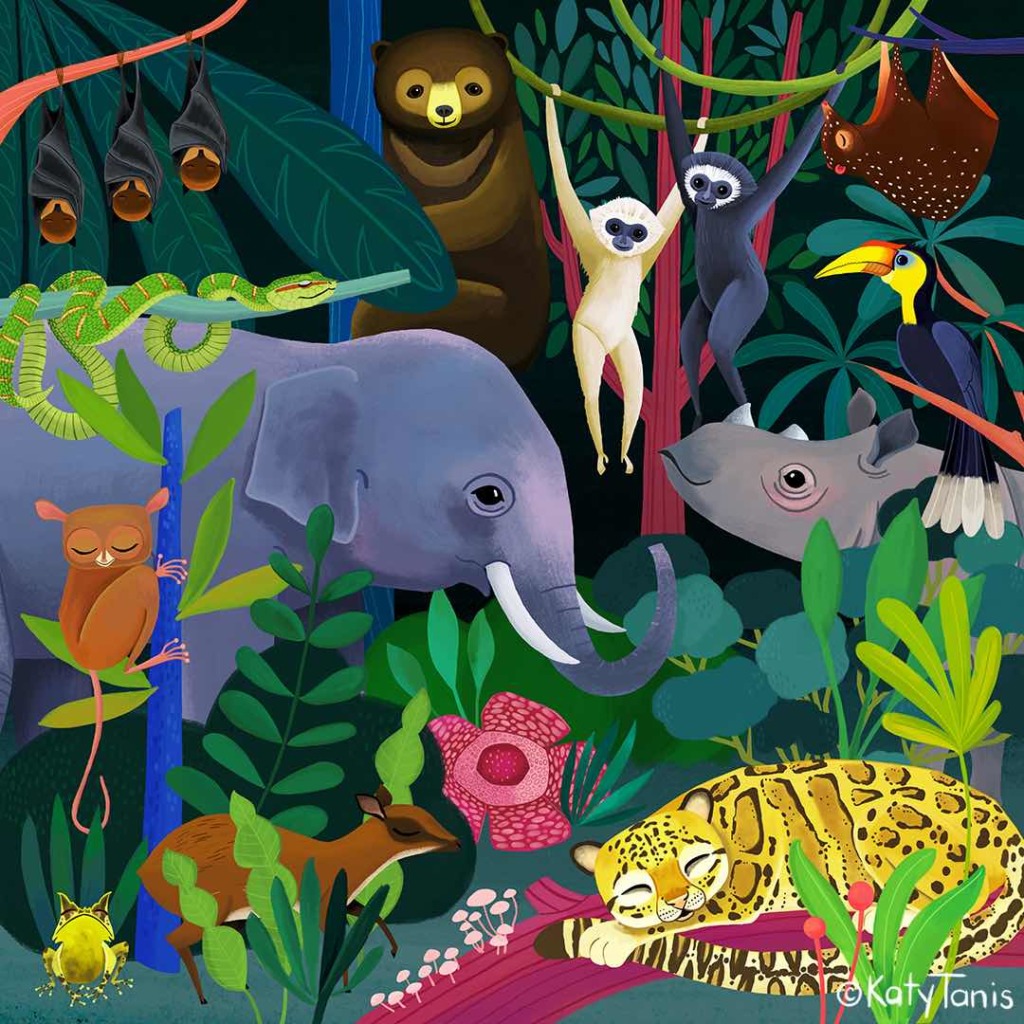
When most people picture lemurs they usually think of the ring-tailed lemur. And maybe sometimes the black-and-white ruffed lemurs or Verreaux’s and Coquerel’s sifakas. That is why I chose to feature the red-bellied lemur and rufous mouse lemur for this year’s World Lemur Day 2022 logo. I don’t think many people know about those charming species.

Mongabay Kids: What advice do you have for young people who like drawing animals and would like to use their artistic talents for conservation? What advice do you have for people who might be shy about sharing their work with others?
Katy: Like I mentioned above, practice and persistence is key. One of the most important things I learned is you have to get comfortable with making BAD artwork. It takes creating a lot of bad artwork to become a good artist. (I don’t really like using the phrase “bad artwork” but by that I just mean art that you are not happy with, or does not meet your expectations.) You just have to think about all that artwork that isn’t looking exactly how you want it as part of the process to eventually being able to make art you like.

No one says you need to share your art. If you want to make art just for yourself that is fine. But if you are making art you want to share but are too afraid to do so here are some things to think about.
- Share work you don’t love. Share work where you “made mistakes.” People want to go on that journey with you and see how your work improves and changes.
- As Bob Ross said there are no mistakes, just “happy little accidents.” Some of my favorite bits of a painting started from a “mistake.” Corinna Luyken has a great book, The Book of Mistakes, showing how mistakes can become masterpieces.
- Many artworks that I thought were not very good are my most popular pieces. As an artist it is not really up to you to decide if an art is good or bad. Once it is made and shared it is left to the viewer to decide what they think of it and what it means to them. The artist’s job is to just keep making art and put it out in the world to reach the people who need to see it.
Learn how to draw a black-and-white ruffed lemur!
Check out Katy’s tutorial here
Wow! This is the list of lemur species that Katy has illustrated so far:
- mouse lemur (generic)
- Madame Berthe’s mouse lemur
- rufous mouse lemur
- Coquerel’s giant mouse lemur
- giant mouse lemur (generic)
- dwarf lemur (generic)
- fat-tailed dwarf lemur
- Groves’ dwarf lemur
- hairy-eared dwarf lemur
- fork-marked lemur (generic)
- pale fork-marked lemur
- sportive lemur
- white-footed sportive lemur
- black- and-white ruffed lemur
- red ruffed lemur
- ring tailed lemur
- blue-eyed black lemur
- red-fronted lemur
- red-bellied lemur
- common brown lemur
- greater bamboo lemur
- lesser bamboo lemur (generic)
- Lac Alaotra bamboo lemur
- golden bamboo lemur
- Milne Edwards’s sifaka
- diademed sifaka
- Verreaux’s sifaka
- Coquerel’s sifaka
- silky sifaka
- sifaka (generic)
- aye-aye
- indri
- woolly lemur (generic)
- southern woolly lemur
- giant aye-aye (extinct)
- baboon lemur (extinct)
- koala lemur (extinct)
- sloth lemur (extinct)
Thanks, Katy!
Click the image below for more lemur facts and fun!


